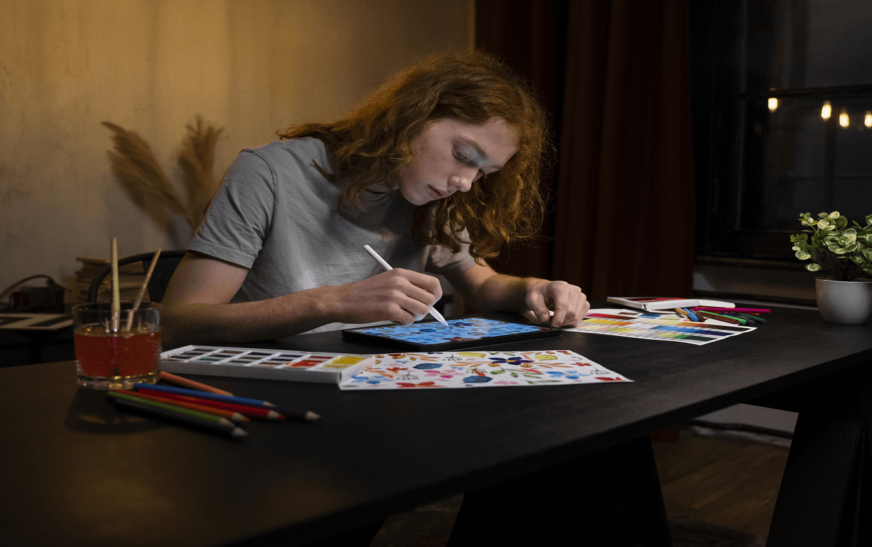When it comes to the digital world, color plays an integral role in how we perceive everything from images on our screens to the user interface of applications. Have you ever wondered how colors are displayed on your computer, smartphone, or TV? The answer lies in the *(wha听isrgb) RGB color model. In this comprehensive guide, we’ll explore (wha听isrgb) what is RGB, how it works, and its application in modern technology.
What is RGB?
(wha听isrgb)RGB stands for Red, Green, and Blue, which are the three primary colors used in the creation of other colors in digital displays. The RGB color model is based on the concept of additive color mixing, where different intensities of red, green, and blue light are combined to produce various colors. This model is most commonly used in devices such as computer monitors, digital cameras, televisions, and smartphones.
The fundamental principle behind (wha听isrgb) RGB is that by combining these three colors in various intensities, you can create a wide spectrum of colors. Each color is represented by a value on a scale from 0 to 255. This means that each of the three colors (wha听isrgb) (red, green, and blue) can have 256 possible values (from 0 to 255), allowing for over 16 million possible color combinations.
The Science Behind (wha听isrgb)RGB
To understand (wha听isrgb) what is RGB more deeply, it’s important to consider the science behind it. The human eye perceives color through the interaction of light with specialized cells called cones. These cones are sensitive to different wavelengths of light, corresponding to red, green, and blue. When light enters the eye, the cones send signals to the brain, allowing us to interpret the color.
In the RGB model, the combination of light emitted from red, green, and blue sources creates the colors we see on digital displays. The additive nature of the model means that:
- Red + Green = Yellow
- Green + Blue = Cyan
- Blue + Red = Magenta
- Red + Green + Blue = White
Conversely, the absence of light (or setting all values to 0) results in black.

(wha听isrgb) RGB in Action: How Colors Are Created
The way (wha听isrgb) RGB works in practice is through color channels. Each of the primary colors (red, green, and blue) has its own channel, and each channel can have an intensity value ranging from 0 to 255. These values are typically represented in either decimal format (0 to 255) or hexadecimal format (00 to FF), which is often used in web design and digital graphics.
For example:
- RGB(255, 0, 0) represents pure red, with the maximum intensity of red and no green or blue.
- RGB(0, 255, 0) represents pure green, with the maximum intensity of green and no red or blue.
- RGB(0, 0, 255) represents pure blue.
Combining these colors at varying intensities results in the full spectrum of colors you see on your screen. For instance:
- RGB(255, 255, 0) will create yellow by combining the full intensity of red and green with no blue.
- RGB(128, 128, 128) will result in a shade of gray, as all channels are equally balanced but at a mid-range intensity.
The Importance of (wha听isrgb) RGB in Modern Technology
The RGB model is the backbone of color representation in digital technology. Whether you’re designing a website, editing a photograph, or watching a movie, RGB is behind the colors you see. Here are a few key applications of RGB:
- Displays: Nearly all digital screens, including those on computers, TVs, and smartphones, use the RGB model to display colors. Each pixel on your screen is made up of tiny sub-pixels that emit red, green, and blue light in varying intensities to form the full spectrum of colors.
- Web Design and Digital Graphics: When creating digital content for the web, designers use RGB values to ensure accurate color representation across different screens. This is especially crucial for web pages, apps, and online media, where colors need to appear vibrant and consistent.
- Photography and Imaging: Digital cameras and image-editing software also rely on the RGB model. Cameras capture images by recording the intensity of red, green, and blue light that hits the sensor. In post-processing, tools like Photoshop allow users to adjust the RGB channels to fine-tune the colors of an image.
- Gaming and Virtual Reality: The RGB color model is also central to gaming, where colors play a critical role in creating realistic environments and immersive experiences. In gaming, RGB lighting effects are used not only for aesthetic purposes but also for user interaction, as seen in keyboards, gaming PCs, and consoles.

The Limitations of (wha听isrgb) RGB
While the RGB color model is widely used, it does have limitations. Since it is based on the emission of light, it is ideal for devices like screens but not as effective for printing or physical objects. This is where the CMYK color model comes in, which is used in the printing industry. The CMYK model (Cyan, Magenta, Yellow, and Key/Black) is a subtractive color model, ideal for pigment-based color creation in print.
Another challenge with RGB is that not all devices or screens can display the full range of colors available in the RGB spectrum. Factors like screen calibration, brightness, and contrast affect how colors appear. For this reason, color consistency across different devices can sometimes be a challenge.
Conclusion
In summary, (wha听isrgb) RGB (Red, Green, Blue) is a fundamental color model used in digital displays and many forms of modern technology. By combining varying intensities of red, green, and blue light, RGB enables the creation of over 16 million colors, making it a versatile model for applications in web design, digital graphics, photography, and more. Understanding (wha听isrgb) what is RGB and how it works is key to appreciating the color-rich world of digital technology.
As technology continues to evolve, so too does the way we use and manipulate color. Whether you’re a designer, photographer, gamer, or simply a tech enthusiast, a solid understanding of RGB can help you better navigate the digital world and enhance your experience with the colorful content all around us.






